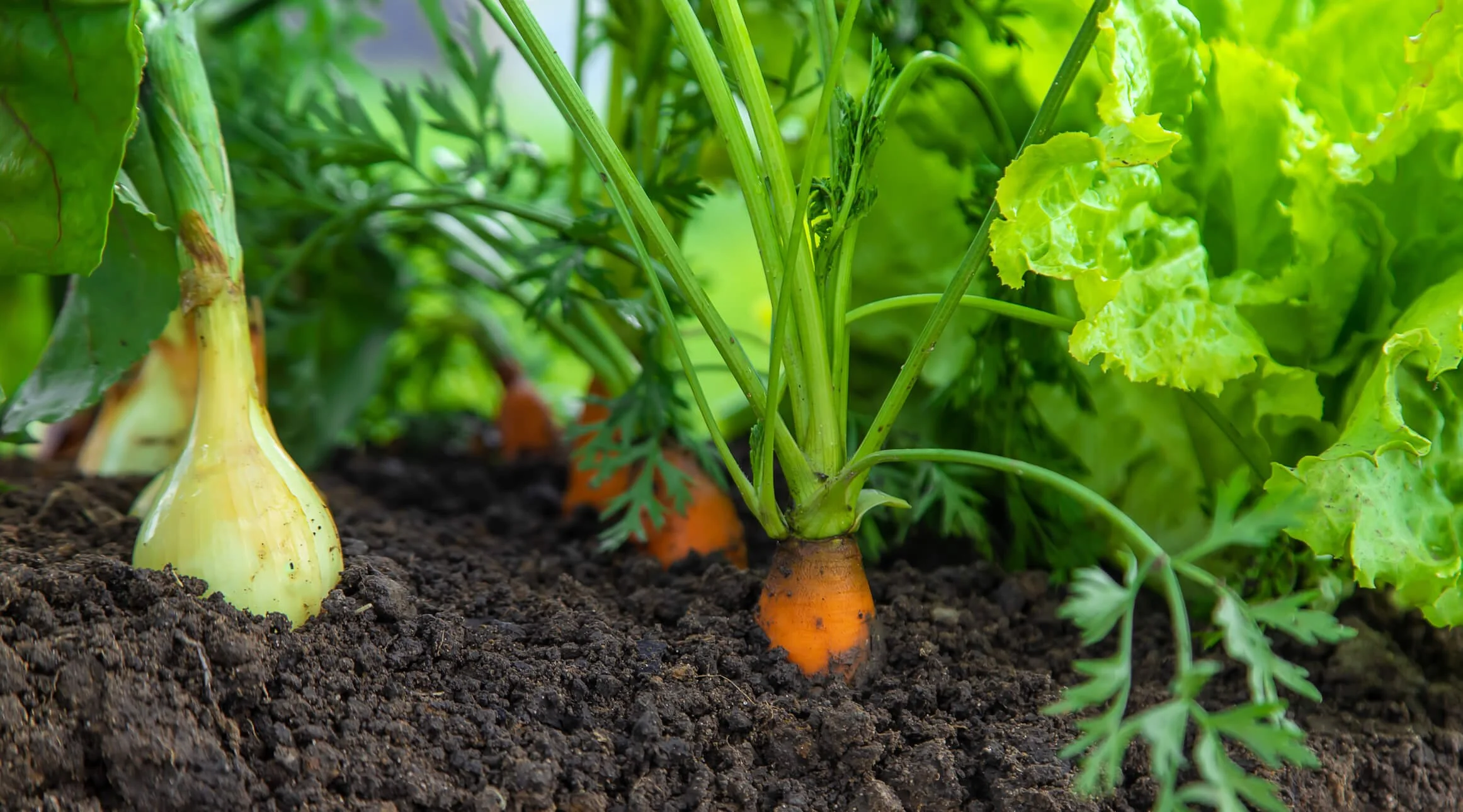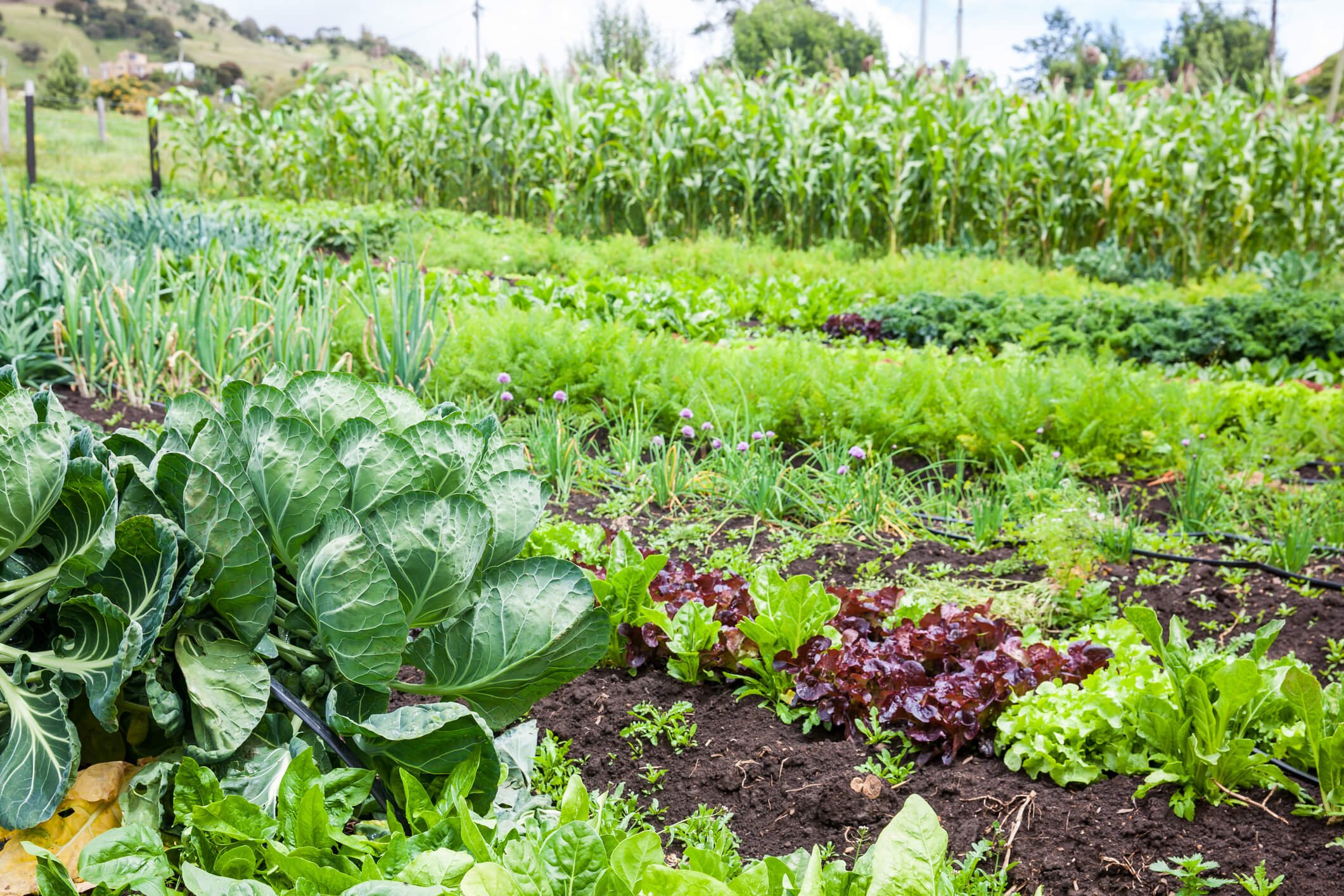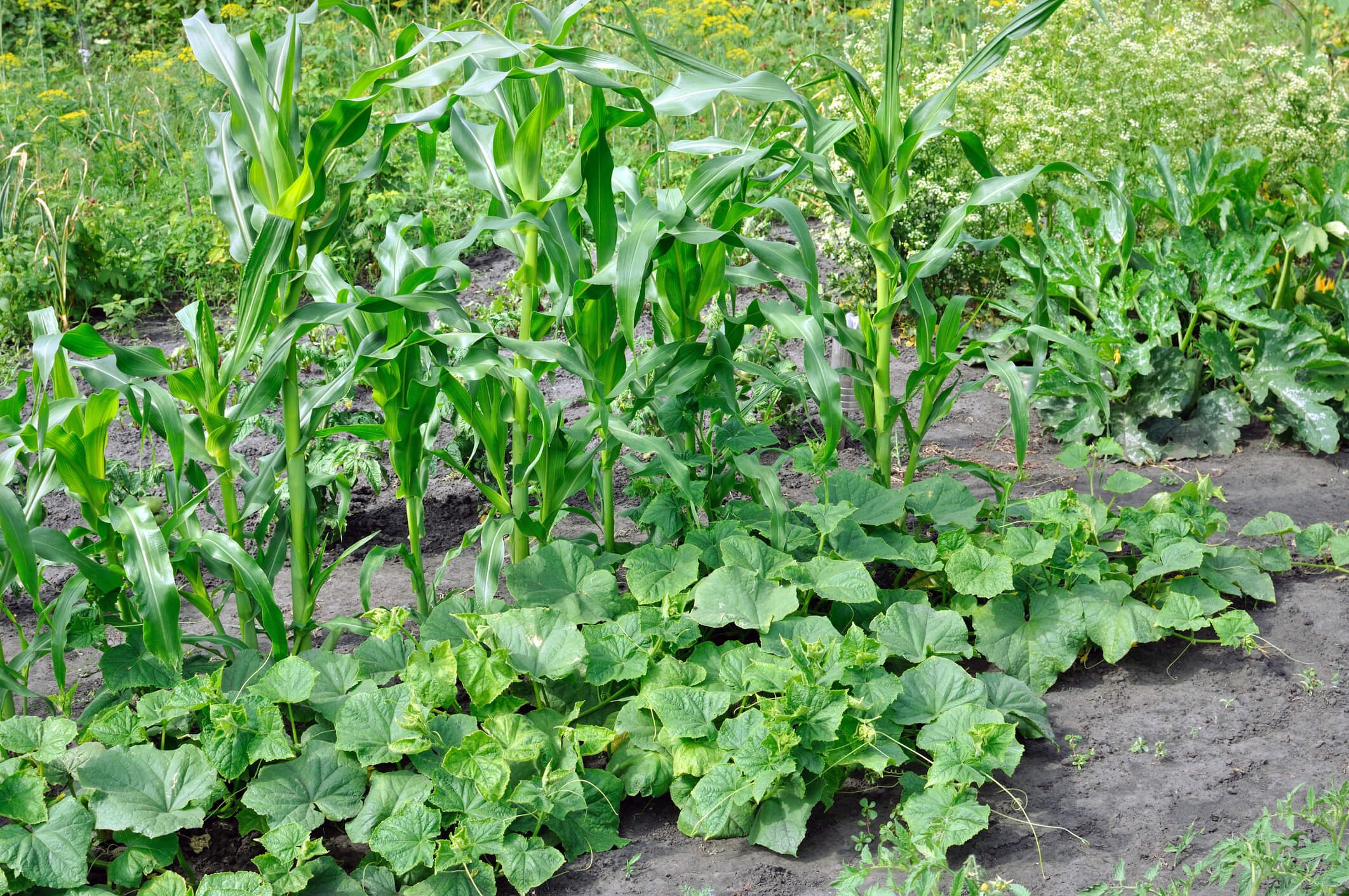The Science Behind Companion Planting
Discover > Grow Your Own Food > The Science Behind Companion Planting
Companion planting techniques were practiced for thousands of years by ancient people way before herbicides and pesticides were used. Companion planting has been practiced to influence overall productivity by growing different varieties of plants in close proximity that complement and benefit each other. For generations, farmers practice companion planting strategies to benefit one or more plants in terms of pest control, nutrient uptake, pollination, providing habitat for beneficial insects, space maximization, and various others to enhance the whole garden. If you look around at nature, different varieties of plants share the same space, growing together in harmony and abundantly. Companion planting is reflective of such natural environments. It is a form of polyculture, which is an agricultural practice of growing different varieties of crops at the same time and place imitating diverse natural ecosystems.
Does Companion Planting Really Work?
Is it true that companion planting works? Over the years, companion planting has been put in the spotlight. There have been constant debates regarding research and scientific-based proven results that companion planting really is effective. Companion planting has long been used by farmers and gardeners for thousands of years but as to the science and data of why it works has been justified with folktales and presumptions. There have been so many claims and published techniques and strategies that raised eyebrows from a lot of agriculturists. Is there any logical explanation or truth behind it or is it just a myth? As experts would argue, the term companion planting is too broad and vague. The more common and definable scientific terms would be “Intercropping”, “Interplanting”, “Plant Associations”, “Plant Partners”, or “Polyculture”.
There is very little scientific study about companion planting that backs up the notion that certain plants are mutually beneficial when grown near each other. And some of those proofs that do exist are somewhat doubtful and questionable. Over time, speculations and unproven assumptions by garden writers have been published and circulated which created the controversies that surrounded companion planting. The techniques and claims promoted were not tested and have no scientific basis and evidence. Logical explanations were not provided as to why they would work. And there have been references to some occult, mythological and pseudoscientific reasons why such companion planting works.
The Core Concept of Companion Planting Should be Based on Common Sense
But controversy aside, the basic idea behind companion planting should be based on common sense. Determination of beneficial relationships should be done by observation of plants in the field. It should be based on analysis of excretions, nutrients use, toxin, physical, chemical, and other biological characteristics of the specific plant variety and not by some assumed compatible chemistry. In every case, it is best to always do research and do your own testing and observation in your own environment as environmental factors do play a role. If some plant variety possesses some beneficial characteristic, it does not mean that this characteristic will always be present and in action no matter which plant it will be planted with and what kind of environment it will be planted in. It is always dependent on a lot of physical, chemical and environmental factors, and the way these different plant species will interact with each other that needs to be taken into consideration.
There are many plants that do grow better when they are planted near a specific variety of plants. How these beneficial relationships could possibly work have been observed over time thus explaining the science behind companion planting.
The ways how they could benefit from each other are stated below.
Pest Control
There are certain plants such as aromatic herbs that contain strong odors. These plants such as dill (how long does dill last?)and coriander confuse and deter certain pests which can make them effective as pest control. These herbs discourage plant-eating pests since they are inedible to most herbivores. The strong smell of these aromatic herbs helps camouflage and hide the smell of your main crops and draw pests away from them. Dill is known to greatly benefit corn, cucumber, lettuce, or onions. But it might cross pollinate with carrots, and might stunt the growth of tomatoes (What wine goes well with tomatoes?) once matured. One other widely used plant in this technique is the marigold. There are certain varieties of marigold which have a distinctive smell that is known to mask the smell of the valued crop and whose roots can fend off specific harmful nematodes and slugs if planted ahead of the crop plant. But there have been some reports that marigolds might stunt the growth of beans. In any case, not all plants are best companion plants for all types and varieties. Do diligent research to avoid planting together incompatible crops.
Trap cropping is also one method of distracting pests away from the desired crop by planting another crop nearby that the pests will prefer more. It is like a sacrificial crop that can suffer and die but the valued crop is likely to be free from pests. Like planting tomatoes with radishes as one horticulturist has observed. To divert the flea beetles that often attack young tomato plants, radishes are planted with the tomatoes as flea beetles prefer the radishes. Or like the nasturtium which attracts caterpillars away from the cabbages and squash bugs away from squash and zucchinis.
Benefits For The Soil
Some plants contribute nutrients to the soil. They help improve soil health and fertility. Legumes like beans, peas, and crimson clover add nitrogen to the soil. This is often referred to as “nitrogen fixation”. They are often beneficial when planted next to crops like corn and tomatoes which are nitrogen-hungry and could benefit from nitrogen boost. Cover crops like buckwheat add organic matter and potassium. Dandelions that have long taproots can access nutrients from the depths of the soil and bring it near to the surface which can benefit shallow-rooted neighboring plants.
Habitat For Beneficial Insects
There are some plants that attract and serve as a natural habitat for beneficial insects, the good bugs. Such as the beneficial beetles that eat pests. Examples of these are morning glory, yarrow, or Queen Anne’s lace which attracts ladybugs that feed on aphids, mites, scales, and other soft-bodied plant-eating insects. Another example is planting dill, cilantro, or fennel which can attract Cotesia wasps that can help rid of hornworms devouring your tomato plants.
Planting hedgerows or a mixed border of shrubs, perennials, and flowering trees also offer a diversity of plant varieties that can provide food and shelter for beneficial insects. Buckwheat is also one popular plant that attracts pollinators, butterflies, and other beneficial insects. It has been observed to greatly aid in decreasing aphids and aphids-transmitted viruses.
Attracts Pollinators
A large percentage of agricultural crops are dependent on pollinators. There are certain plants that attract pollinators more than others. Such plants like mint, larkspur, aster, clover, blueberry, and Oregon grape attract bumblebees more. A study conducted showed that planting these plants that attract pollinators greatly improved crop productivity. Most especially those varieties where cross-pollination is essential.
Planting ornamentals in your garden that will flower just before your vegetable crops will bloom will encourage the presence of pollinators to your garden by the time your crops need them. Lobularia is a good companion plant for roses and other crops as it attracts both pollinators and beneficial insects like the hoverfly, which is also an important pollinator.
Weed Suppression
Some fast-growing crops like lettuce, arugula, cilantro, or other leafy greens are usually planted and grown together with widely spaced vegetables like tomatoes, peppers, or cabbage to squeeze out weeds and as temporary ground cover. These leafy greens act as green mulch that smothers weeds which can be harvested before the bigger plants need more space. The weed-suppression ability of some plants like the squash is also what made the famous “Three Sisters” garden work.
The three-way companion planting involves beans, corn, and squash. The beans run up the corn stalks as it grows, and the ground is covered in squash vines to help suppress weeds. Another example is growing cucumbers with taller crops like tomatoes, okra, and eggplants. Cucumbers produce several growth-inhibiting allelochemicals that stifle weed growth and act as living mulch. Though beware of the resource competition possibility between your living mulch and vegetable crop.
Complementary Plants
This refers to contributing to the growth and productivity of your neighboring plants such as tall and leafy zucchini and asparagus shading smaller shade-loving plants. Taller and bulky crops can offer shelter and harsh weather protection to more delicate plants. Or the lettuce which likes to grow in cooler conditions, being planted behind larger tomato plants to provide a cooler environment during mid-summer. There are also some plants like marjoram and chamomile which release certain chemicals that help plants around them grow faster or taste better. The intercropping of “Three Sisters”, beans, corn, and squash, which was known historically is also an example of complementary plants working for each other. Beans continually supply nutrients to the soil as nitrogen-fixers, while corn provides a structure for the beans as it grows to maturity. In return, bean provides the corn extra support during strong winds, and the squash shades the soil like a living mulch, reducing evaporation and suppressing weed growth.
Companion plants can also help as physical barriers to ward off pests. Like cover crops or low-growing crops such as oregano that can block soil-dwelling pests like root maggots or flea beetles. Or hedgerows that can act as physical barriers to both harsh weather and pests.
Crops Tend to Perform Better in Polyculture
A lot of gardeners and farmers practice monoculture where identical plants are grown together in rows, but there have been studies that they are more susceptible to pest problems and plant diseases. Grouping together the same plant species strengthens and concentrates their smell attracting pests and predators. Crops tend to perform better in polyculture where different varieties of plants are grown together. Common problems encountered in monoculture are reduced and productivity has been shown to improve. The success and beneficial relationships of interplanting is greatly evident in natural wildlife ecosystems. However, if you are to choose specific plants to grow together, you have to fully understand how each plant behaves and take into consideration all the factors affecting the growth of putting them together. Experiment, observe, and keep notes of what works and what doesn’t. Do trial and error. Know the science and logical explanation for such results. You are the best person to know your garden.
If you need to do research, you can also look it up on the internet. But whatever information you acquire should just be used as a guideline. Do not blindly follow suggestions as your own garden is unique. Practice or implement it with caution. Keep in mind all the factors involved in growing these plants from sun exposure, to weather conditions, soil structure, and the plant’s behavior and growth requirements. Use common sense in planning and view your garden as a complex ecosystem with different elements interacting with one another.
The term “companion planting” might be tainted, and different terminologies have been preferred but the science behind it can’t be denied. There are indeed benefits to growing plants in diversity. It is just a matter of finding the right plant companions that can ensure you a happier, more stable garden, and a productive harvest.
*This is the forty-ninth in an ongoing series that teaches homesteading in Texas. This is not a sponsored post although it may contain affiliate links to recommended products and/or services
Go back to the previous article: Marketing and Promoting Your Homestead Products
Move forward to the next article: Reduce, Reuse, Recycle on Homestead







